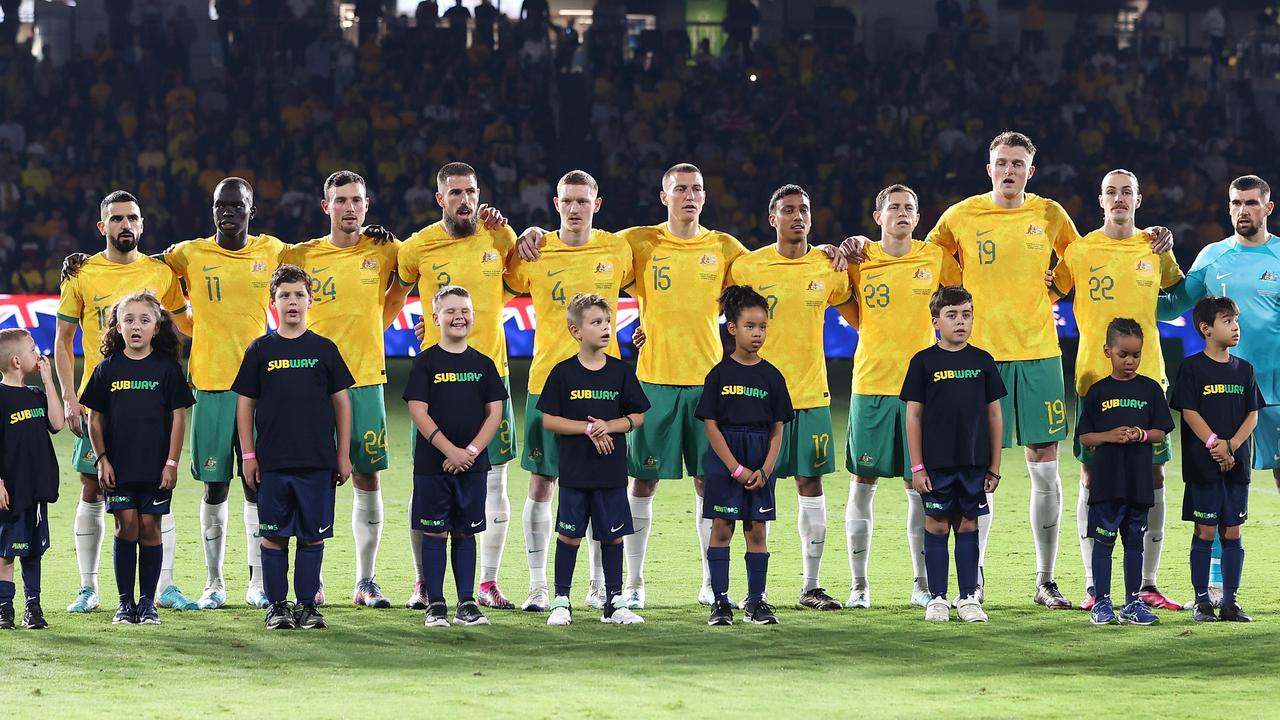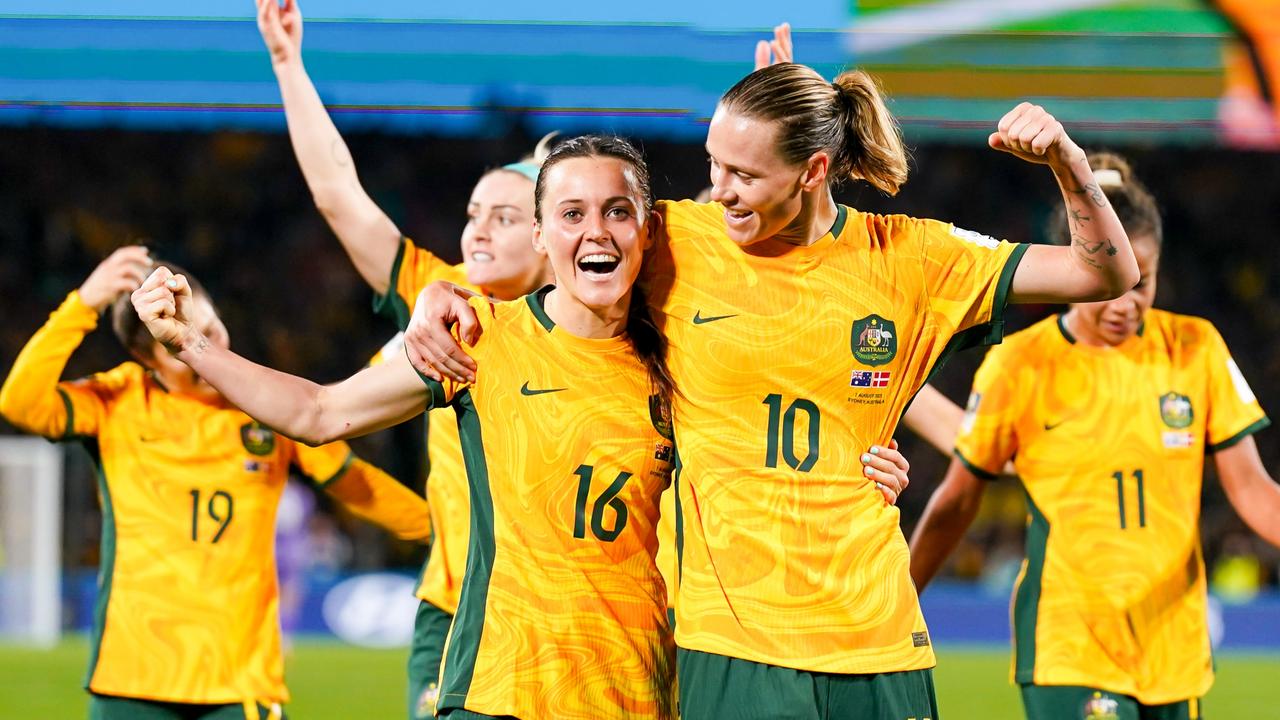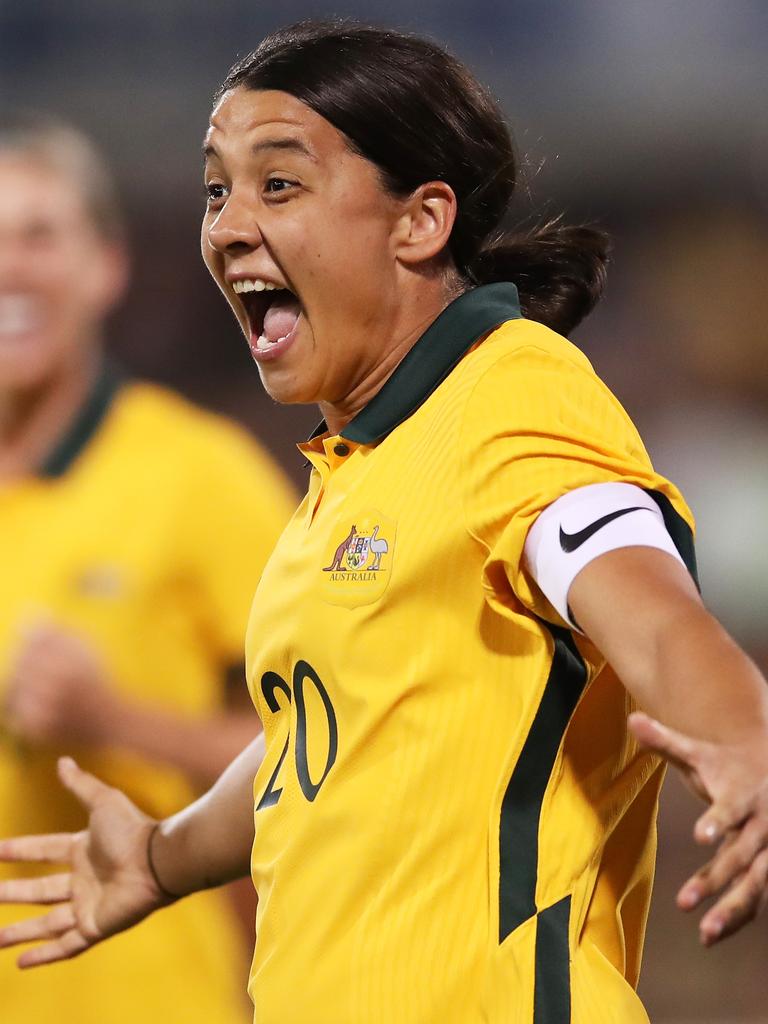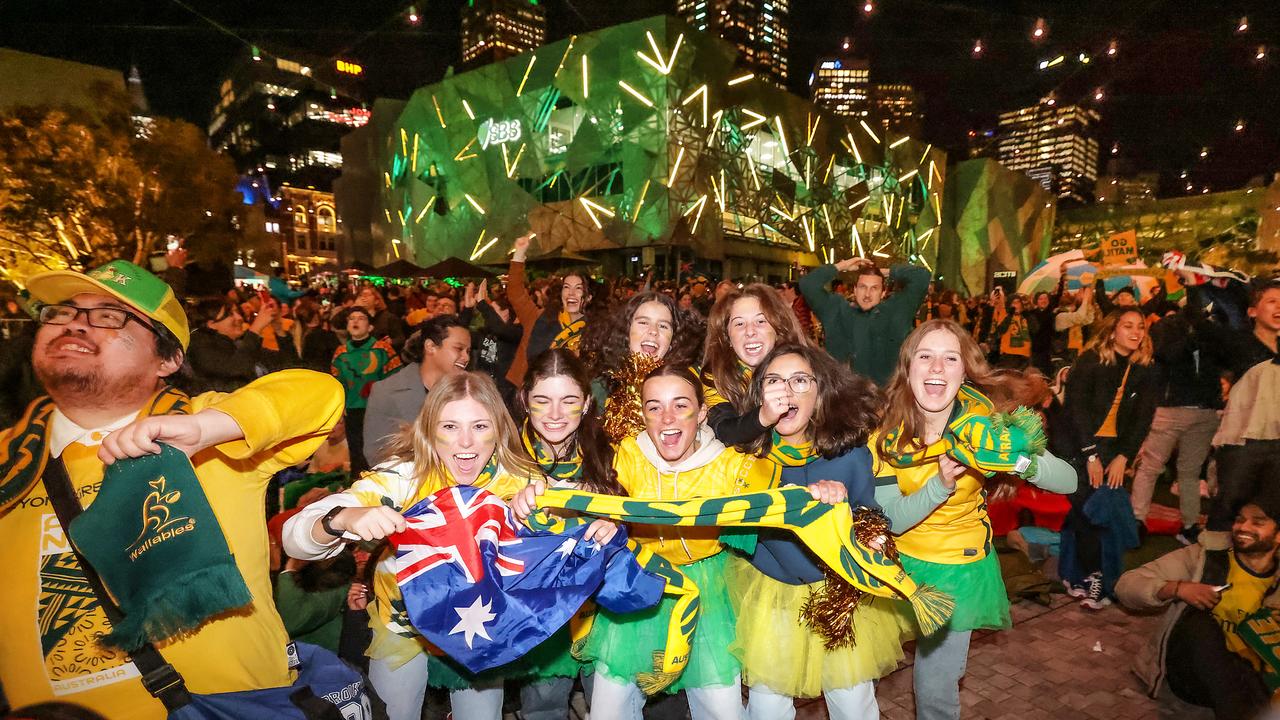‘It’s time to give these women the pay they deserve’
The Matildas have well and truly proved all the critics wrong. Now, it’s time to pay up – and give our stars what they deserve.
COMMENT
This Women’s World Cup should be the catalyst for FIFA to correct the gender pay gap in football.
This generation of women have delivered on every test placed in front of them, despite the numerous barriers in their way.
Before the tournament kicked off, the Matildas released a video calling for fairness and pay parity. It’s worth taking some time to understand the complexity of the gender pay gap in this situation.
The Matildas’ and Socceroos’ collective bargaining agreement with Football Australia guarantees each team the same minimum percentage of prize money from the tournaments they enter. The prize money for the World Cup is determined by the tournament organisers, FIFA. For the women’s game, FIFA placed $160 million on the table. For the men’s they offered $643 million.

On the face of it, it seems like a case of unequal pay, which has been illegal in Australia since 1969. The actual job of both women and men is to play football in a world tournament. But Football Australia’s deal to offer the “same percentage” passes the legal requirement of equal pay.
The financial advantage for men in this case is more similar to a gender pay gap. The average total remuneration for men is higher than the average for women.
The reasons for this are in the control of FIFA, not the players who leave their blood, sweat and hearts on the field.
The prize pool is determined by sponsorships, broadcast rights, attendance and merchandise sales. Those who argue against the same prize pool say women don’t make as much as men in these areas.
“What do you want to do, take money away from men and give it to women?” is a common argument at this point, particularly on social media.
In the Matildas’ video, defender Steph Catley calls for “those who run the game to provide opportunities for women and girls” and attacker Hayley Raso calls for “those in positions of power to help make women’s football as big as it can be here and around the world”.
The players aren’t calling for money to be taken from men. They are calling on employers and decision-makers to take action to close the gender pay gap by valuing women’s football in the same way they value men’s. They are asking FIFA to increase the value of their sponsorships, their match attendance, their broadcast rights to the same value as the men.

Watching this Women’s World Cup, it would be hard to say that these women don’t deserve that. Some action has been taken in this regard, but it’s not enough.
When it comes to merchandise sales, Nike confirmed the Matildas sold more official jerseys on July 19, the day before the Women’s World Cup tournament started, than the Socceroos sold before, during and since the 2022 Men’s World Cup in Qatar.
Ashley Reade, the head of Nike Asia Pacific, also said the marketing potential for the women’s team was greater than then men’s.
On attendance, the Matildas have proven on many occasions they can fill stadiums – the bigger the better. Executives had to move the opening match of this World Cup from Homebush to Olympic Park because demand was so high. A record crowd of 75,784 fans watched the Matildas beat Ireland in their opening match. It should be noted the opening match of the 2022 Men’s World Cup in Qatar was attended by 67,000 fans.
It’s not just the Matildas drawing the crowds. More than 40,000 fans watched England versus Haiti in Brisbane, 40,000 packed the Sydney Football Stadium to watch France versus Jamaica and more than 40,000 fans watched the USA versus Portugal in Auckland. These records follow a season of record-breaking attendance at the English Women’s Super League, which grew by 729 per cent between 2017 and 2022.


And yet, despite knowing that demand, tickets for the men’s World Cup started at $19 and tickets for the women’s World Cup started at $15.
The FIFA Women’s World Cup has also smashed viewing records, netting a tidy sum for broadcasters who paid almost half the rate for the Women’s World Cup than the men’s.
In 2022, SBS paid $20 million for the rights to the Men’s World Cup in Qatar. The final had an average audience of 976,000 viewers. In 2023, Optus Sport paid $10.4 million for the Women’s World Cup and on-sold some of those rights to the Seven Network. On Seven and Seven Plus alone, 6.54 million people tuned in to watch the Matildas play Denmark, and the average audience was 3.56 million. That’s higher than any Rugby League grand final or State of Origin match since 2016. If you include Optus Sport, there’s a fair chance it beat every AFL grand final and the second most-watched sport program in Australia’s history – the 2003 Rugby World Cup.

This is not just a local phenomenon. According to Euromonitor, viewership of the Women’s World Cup in Europe is already double that of 2015 – and we’re only just at the Round of 16.
Sponsorships form a large part of the prize pool and like ticket prices and broadcast rights, these were priced lower for the women’s game and lower than other sporting events on the Australian calendar.
In their video, the Matildas players called for “recognition, validation and respect”. Their work rate is not in question. Women football players put their bodies on the line and leave their hearts on the field.
Following record-breaking results in every area that determines the prize pool for the FIFA World Cup, it would be prudent for those who negotiate the value of these items to assess whether they underestimated the value of women’s football or had any conscious or unconscious bias that stopped them from acting to generate more money for these incredible athletes.
This tournament should be a turning point.
It’s time to act to close the gender pay gap and pay them what they are worth and what they deserve.
Mary Wooldridge is the CEO of Workplace Gender Equality Agency (WGEA)






